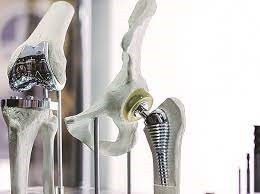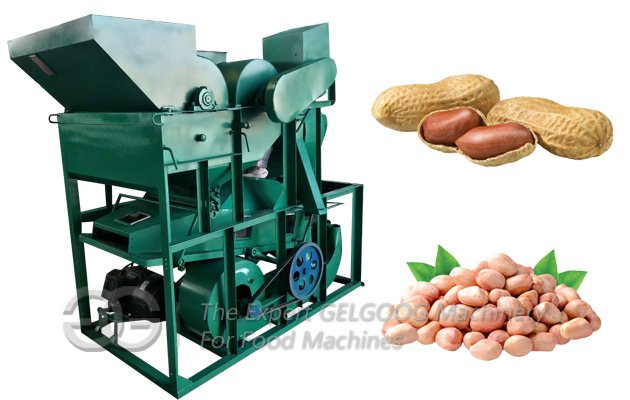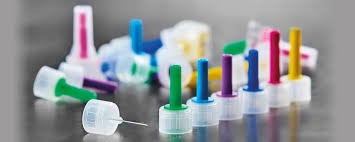Bone is an intricate biological tissue that is a reservoir for our body’s calcium. Orthopedic implants also provide mechanical stability to our body, making locomotion possible. This hard biological tissue has a hierarchical structure and is designed optimally with Orthopedic Implants.
Visit this Page for More Information: Start a Business in Mechanical and Engineering Goods Industry
What are Orthopedic Implants?
Orthopedic implants can be defined as medical devices used to replace or provide fixation of bone or to replace articulating surfaces of a joint. In simpler words, orthopedic implants are used to either assist or replace damaged or troubled bones and joints. Orthopedic implants are mainly made from stainless steel and titanium alloys for strength. They are lined with plastic to act as artificial cartilage to reduce the stress on the articulating surfaces. Some implants are cemented, and others fit so that your bone can grow into the implant for strength. Some examples of orthopedic implants are orthopedic plates, orthopedic nails, and orthopedic screws.
Bone remodeling and need for Orthopedic Implants:
The so-called bone remodeling process is a continuous process of bone resorption and formation in our bones from birth to death. The bone remodeling process aims to provide maximum strength with minimum mass to our bones. When a bone is broken, there is no other way than to fix it by employing man-made supportive structures.
Related Business Plan: Surgical, Medical Plastics, Medical Disposables, Disposable Medical Products used in Hospitals
Click here to send your queries/Contact Us
Fortunately, bone can effectively regain its lost strength through the healing process. The healing process of bone is a complex process in which both medicine and mechanics are significantly at play and can alter the healing process’s time course. Interesting, all broken bones go through the same healing process. The inflammation stage begins when the bone is broken and lasts for around five days.
Biomechanical applications in Orthopedic Implants
The key factor that guides bone healing is the interfragmentary movement, which determines the tissue strain and cellular reaction in the fracture healing zone. Biomechanical principles should be considered carefully to achieve excellent and acceptable healing results.
Various Orthopedic Implants:
Orthopedic Screws
The helical-thread screw is a significant invention in Mechanical Engineering, which changes angular motion to linear motion to transmit power or develop large forces. Screws are complex tools with a four-part construction: head, shaft, thread, and tip. The head is an attachment for the screwdriver, which may be hexagonal, cruciate, or slotted.
Read Similar Articles: SURGICAL
The head also serves as the counterforce against which compression generated by the screw acts on the bone.
Orthopedic Plates
Plate and screw fixation of fractures has undergone continual design modifications and improvements during recent decades. This engineering principle applies to the conversion of tensile forces to compression forces on the convex side of an eccentrically loaded bone. This is accomplished by placing a tension band across the fracture on the tension side of the bone.
Orthopedic Nails
Over the past 50 years, medullary nail techniques for fracture fixation have gained universal acceptance. The conventional Kuntscher nail is a longitudinally slotted tube inserted into a long bone under pre-stress. The radial stress caused by the insertion of an intramedullary pin leads to friction between nail and bone that secures the relative movement between the two nailed fragments. However, since these frictional forces are limited, the application of this technique is limited to just too simple midshaft diaphyseal fractures. The intramedullary rod is commonly used in long-bone fractures, particularly in lower limb fractures. It offers the advantage that it can be implanted through a small incision.
Market and Business scope for Orthopedic Implants:
The Asia Pacific is a significant market for orthopedic implants. Their regional market is driven by the lucrative growth opportunities provided by the healthy expansion of the medical and pharmaceutical industries in the region. Further, factors such as the rising demand for advanced implants, the growing awareness regarding the product, and the increasing demand for minimally invasive procedures, also support the industry in the Asia Pacific region. In the regional market of orthopedic implant surgery by insurance companies, drivers such as the increase in purchasing, the development of healthcare infrastructure, and the rising population of geriatric patients, are expected to enhance the market growth in the forecast period.
Related Feasibility Study Reports: Surgical Blade & Disposable Scalpel – Manufacturing Plant, Detailed Project Report, Profile, Business Plan, Industry Trends, Market Research, Survey, Manufacturing Process, Machinery, Raw Materials, Feasibility Study, Investment Opportunities
The global orthopedic implants market expanded significantly throughout the course of the historical era, with a CAGR of 6% from 2017 to 2021. Growth has been largely attributed to the rise in bone abnormalities and orthopedic problems over the past few years. Sales prospects for orthopedic implants significantly decreased during the COVID-19 pandemic, particularly in the first half of 2020. Obesity and diabetes co-morbidities, in particular in the elderly population, have been increasing the risk of degenerative joint diseases. Sports-related injuries are on the rise as young people participate in greater physical activity. This has increased demand for orthopedic implants across the globe. Because of the FDA’s increased drive for innovation, big pharma’s increased investment in R&D, and favorable winds for a more acceptable reimbursement model, the North American market may see the highest revenues among the regions. The market for orthopedic implants in North America, which was valued at $250 million in 2021, is anticipated to grow to 370 million dollars by 2032, a CAGR of 4 percent from 2022 to 2032. To replace or support a missing or injured bone or joint, orthopedic implants are manufactured in large quantities. Due to improvements in healthcare infrastructure, increased health awareness, and a rise in diagnosis, Asia-Pacific offers lucrative prospects for key companies operating in the orthopedic implants market and grows at the quickest rate throughout the course of the projected period. Additionally, the primary driver of market expansion is an increase in surgical operations in developing nations like China and India. China is anticipated to grow at a CAGR of 6% through 2032.
Read our Books Here: Handbook on Medical and Surgical Disposable Products (Blood Bags, Plastic Gloves, I.V. Cannula, Infusion Set, Gowns, Masks, Catheter, Cotton and Bandage, Surgical Wear, Syringes)
Implant Materials:
The most commonly used metals and polymers for orthopedic applications are stainless steel, cobalt-chromium alloys, titanium alloys, ultrahigh molecular weight polyethene (UHMWPE), and polymethyl methacrylate (PMMA). In addition, cobalt-chromium and titanium alloys are typically less ductile and more robust than stainless steel. The properties of medical-grade stainless steel provide a balance between high strength, flexibility, and fatigue performance. Ductility is essential for fracture fixation components since they should be deformed in the operating room to conform to the bone curvature at the fracture site. Corrosion resistance is another critical consideration achieved in stainless steel by keeping the carbide content to a minimum and including chromium. Resistance to pitting and crevice corrosion is also significant and can increase with increasing chromium, molybdenum, and nitrogen.
Need for orthopedic implants:
The orthopedic implants market is driven by the high incidence rate of osteoporosis, osteoarthritis, and obesity, along with a rapidly ageing global population. Due to lifestyle-related factors such as lack of exercise, middle-aged patients increasingly opt for orthopedic implants. The increase in the mean age over the next few years is expected to boost the orthopedic implants industry growth.
Click here to send your queries/Contact Us
Owing to the higher proportion of anatomic injuries worldwide, the demand for knee and hip orthopedic implants is projected to increase considerably in the coming years. Joint and knee problems are common in Asia, and hip problems are comparatively more common in Europe; thus, the industry in these regions is expected to witness healthy growth in the forecast period. The primary application segments in the market are reconstructive joint replacements, spine implants, craniomaxillofacial implants, dental implants, trauma implants, and orthobiologics, among others. We at Entrepreneur India provide exhaustive information on the sector/business you plan to pursue. We ensure your startup meets all the rules and regulations. Our market research reports, as well as our project counseling, provide you with new insights that give you a humongous head start but also help accelerate growth.
The Project report presented by Entrepreneur India for new businesses includes a broad commercial center investigation. The report covers region-wise patterns trending in the sector, overseas trade, and the regulatory framework with a complete SWOT analysis of the business.
See More Links:
- Start a Business in Asia
- Start a Business in Potential Countries for Doing Business
- Best Industry for Doing Business
- Business Ideas with Low, Medium & High Investment
- Looking for Most Demandable Business Ideas for Startups
- Startup Consulting Services
- Start a Business in Africa
- Start a Business in India
- Start a Business in Middle East
- Related Videos
- Related Books
- Related Projects
- Related Market Research Reports
AA_20Art22





